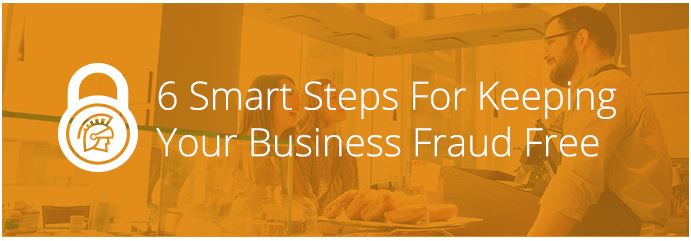6 Smart Steps for Keeping Your Business Fraud Free

A recent survey by the Association for Certified Fraud
Examiners (ACFE) provides some startling perspectives on the costs of
fraud to today's businesses:
- When you order new cheques, choose "signature required" upon receipt
to make it harder for anyone who tries to intercept them before they
arrive.
- Nearly a quarter of all fraud incidents cost the affected company more than $1 million.
- Respondents estimated that a typical business loses 5% of its revenue to fraud each year.
But the ACFE offers good news, too. Proactive, preventive security
measures can dramatically reduce the cost of a fraud incident because
they help a company detect the crime sooner. Fraud detected through
surveillance and monitoring costs around $49,000, while instances
discovered by law enforcement can cost a business in excess of $1
million.
While no prevention system can ever be fail-safe, the following steps can effectively help reduce your risk of fraud:
- Be vigilant about payment security Whether you're
receiving payments or making them, payment security is paramount. For
Internet sales, use address and card verification measures. Fully
encrypt all points of payment to reduce the risk of hacking. When making
payments, choose methods that have proven security protections in
place, such as secure ePayment providers and high-security cheques.
- Monitor your business credit report Credit accounts
are often the first place where signs of fraud will appear. Just as you
monitor your personal credit, it's imperative to regularly monitor your
business credit report for those telltale signs.
- Be careful during the hiring process Sadly, fraud
often stems from internal sources. Thoroughly vet new employees,
conducting full background checks on anyone who will have access to
company funds, customer data or other proprietary information.
- Train employees in fraud recognition/prevention
Educate employees who work with data, credit and cash about the signs of
fraud and the steps they can take to protect your company. For example,
train them to recognize how a credit card device might have been
tampered with and stress the importance of shredding documents before
disposal.
- Adopt and enforce cyber security measures In
addition to keeping up-to-date anti-virus and anti-malware software on
your company systems, implement and enforce a strict password policy.
Establish clear guidelines for those who access company systems and
implement a sensible policy for employees who want to use personal
devices to interact with company systems.
- Manage cash and credit Keep a close eye on the
movement of cash and credit within your business. Implement a checks
& balances system, i.e. have one person sign cheques while a second
person balances the company chequebook rather than having one person do
both. Require approval for expenses and consider using security cameras
to monitor inventory storage, credit-processing machines and cash
registers.